
Review on NewAir G56 5600 Garage Heater by Brandon Doctore

A good device to buy depends on your expectations.
It took me forever to find the 'right heater' for my garage and it was hard for me to read so many wildly different reviews. So after a few weeks of use I wanted to give a clear and unbiased review. So here's the thing. I didn't start with this NewAir G56 5600W heater but with one of these 1500W infrared home heaters. This device raised the temperature in my garage by just 2 degrees. Granted it's a large 2 car garage (26ft x 26ft) and generally not insulated so I wasn't expecting miracles but come on. 2 degrees? For real? .and the cost of those 2 degrees was a whopping 20kWh+ per day, which was unacceptable. But it wasn't this heater, it was another heater that I have yet to return. After a long search I found this heater and decided to try it. I needed to install a 240v line in my garage. So note that the plug type is a standard NEMA 6-30 plug, i.e. a 30A 240V plug, a perfectly normal type for its specifications. but it does take an electrician (or you if you know what you're doing) to install the proper wire and outlet. how did it work Really good! When it was 20 degrees outside (Western Pennsylvania), the temperature in my garage rose to about 38 degrees. not cool but definitely not bad as the goal was to keep the garage free from sub-zero temperatures. Then I got to know sealing. (yup!) The garage in this house we just bought didn't have airtight garage doors and had some gaps; So I bought it from Home Depot and installed it for about $75. Now it warms up to 48 degrees in the garage and 18 degrees outside, the heating works at full speed. (After all, the garage is still not properly insulated and the space is quite large, so I still wasn't expecting a place to rest at 70 degrees.) The downside of a fully inflated car, however, is that it's expensive to run, with daily kWh consumption. Consume 25 kWh. So I tested it in various conditions for several days and found that on the lowest settings it kept the garage just above zero (about 38 degrees or so) and almost never had to be turned on to get that - the end result was about 2 up to 5 kWh per day (approx. 75 cents per day) just for keeping warm. And it keeps the garage warm enough to work in a hoodie or jacket if I want by letting it run for a few hours and always keeps our fridge from freezing, so overall. It's good enough for me! In terms of quality, it works from day one, is quiet enough for a garage heater, doesn't smell, doesn't take up much space and produces a good flow of very warm air. (Warm enough to warm your hands but not hot enough to burn down your house.) I've had it for about a month now and I'm glad I bought it. I'm not sure if it's for you or not, but if your goal is to inexpensively store things just above freezing in an uninsulated space, this works well, at least if your garage is 26' x 26' or smaller. (I did not test in a larger room). If your goal is to have a nice 65-70 degree garage roast for a man cave. If your garage is fully insulated I'm assuming it's doing fine. If it's not insulated, you'd better have a smaller garage or be prepared for a sky-high electric bill to be comfortable enough. In the end, I definitely recommend it, but just make sure it meets your goals and expectations. I hope this helps someone decide whether or not to buy the device. During heat production, the thermostat is generally not very stable. So I docked an extra star to it. I adjusted it very carefully little by little until I reached my goal of 38 degrees. then one day, voila, it was 20 degrees and it wouldn't start at all. I adjusted the thermostat up and it eventually clicked, but then ran for too long. I've tried several times to find a "stable" thermostat setting, but it's too inconsistent to rely on every day. To compensate for this, I'm essentially building a new thermostat here at Revain with other parts that will serve to turn the unit on and off and turn it on and off with much greater reliability. For those of you who need to do this, look for an SSR compatible temperature controller, a suitable air temperature thermocouple (essentially an electronic thermometer), an SSR (solid state relay) to toggle the 220v power supply on and off and a Heatsink for the SSR (if not included), a cooling fan to make it more efficient (I use an 80mm fan for a 12v computer case), strong cabling and a case that fits inside. it.EDIT2: Homemade thermostat is ready and works very well. (Correct!) Here is the parts list: Arlington EB1212-1 Electronic Enclosure, 12" x 12" x 4", Non-Metal, 1-Pack AGPtek TA4-SNRW PID Temperature Controller with 1 DC 3-32V Alarm Input 24-380 VAC Output 60A Solid State Relay with KingWin 80 x 80mm Aluminum Heatsink Long Life Bearing Case Fan CF-08LB Black 12V 2A DC Universal Regulated Switching Power Supply (For 80mm Fan, See Above) -100-1250 C 13mm Thread 5mm Probe Typ K Thermocouple Temperature Sensor You will also need a 14 or 16 gauge AC power cord with a 110V plug for the electronics, a 10 gauge 240V Rolex cord, a NEMA 6-30 plug and an outlet, into a new case and the case itself into an outlet some good screwdrivers, wire strippers, a drill with a hole saw and/or a jigsaw for cutting plastic etc.
- Good workmanship
- No
New products
Comments (0)
Top products in ♨️ Space Heaters
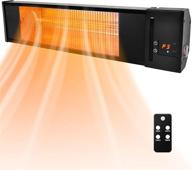
Stay Warm And Cozy With TRUSTECH'S Efficient Garage Heater - Fast Heat, Timer, Overheat Protection, And Waterproof Design

46 Review
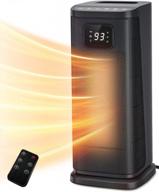
KopBeau 1500W Oscillating Space Heater - Fast Electric & Portable Room Heater W/ Thermostat, 4 Modes, 24H Timer, LED Display For Indoor Office Use

50 Review
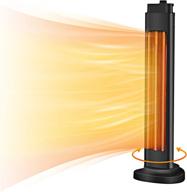
Efficient And Convenient Large Room Heating With 1500W 4-Mode Electric Space Heater

36 Review
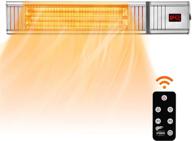
1500W Electric Patio Heater With Remote Control, LCD Display, 24H Timer - Fast & Quiet For Large Room/Garage

42 Review
Another interesting products
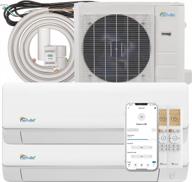
White Senville Dual Zone Mini Split Air Conditioner Heat Pump, 28000 BTU, Alexa Compatible - SENA-30HF/D

21 Review

Split system Roda RS-AL09F / RU-AL09F

37 Review

UL Certified 120V Unheated Awoco 48 Super Power 2 Speeds 1650CFM Commercial Indoor Air Curtain With Free Door Switch

23 Review
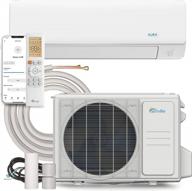
Senville AURA: Energy Star Mini Split Heat Pump W/ 9000 BTU & Alexa Compatibility

13 Review

